
Build Number Sense: Practice counting, skip counting, subitizing, ordering numbers, mental arithmetic, formal addition and subtraction, and more.
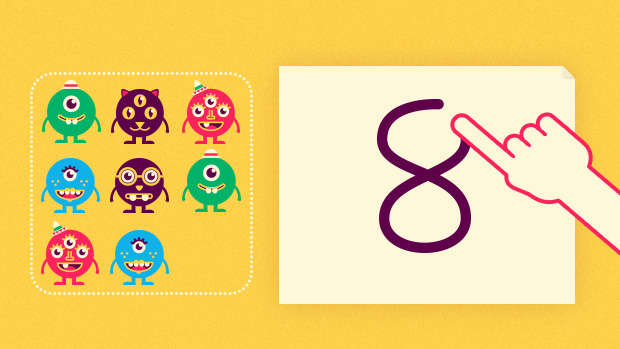
Adaptive Difficulty: Quick Math Jr. learns from your progress and adapts as you play, giving questions at the appropriate challenge level. Progress from multiple-choice to writing answers directly on screen.

Create Your Own Monsters: Get creative with the monster maker and watch as your own characters appear in the game!
Quick Math Jr. is a mathematics learning app designed to give children the experiences with number they need to develop a strong number sense.
Children have a strong number sense when they understand what number means. Number sense development in the early years has a big impact on future mathematics achievement, so it’s important for young children to have a lot of practice.
Children develop number sense over time, through different experiences with number. There are many different concepts that go into building a strong number sense, including understanding of:
Quick Math Jr. helps children develop their number sense with fun games that adapt to your child’s current level of knowledge.
Quick Math Jr. is aligned with preschool and kindergarten curriculums, and helps children progress from beginner counting games to formal addition and subtraction. Quick Math Jr. even recognises your child’s handwriting, so children also practice handwriting skills as they progress from tracing numbers to handwriting their answers on screen.
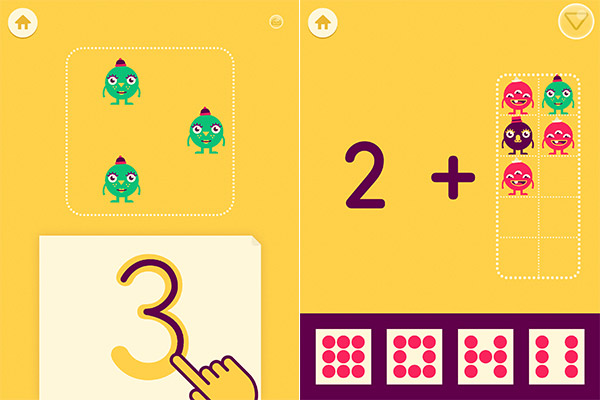
Count the monsters and make matches between different representations of number including dot patterns, numerals and number words. This game builds counting skills and number knowledge. As players progress, they are introduced to formal addition and move from multi-choice to handwritten responses.
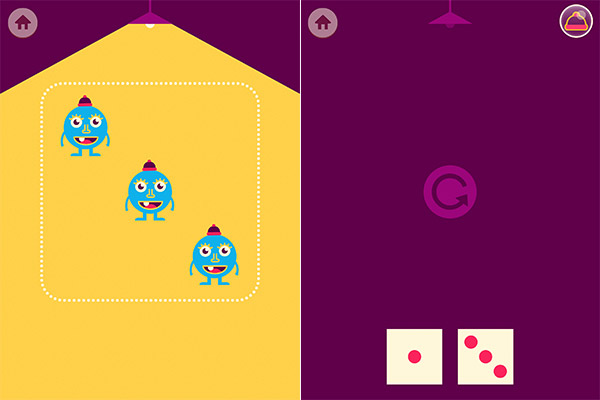
Quick! How many monsters did you see? Subitizing is the ability to quickly and accurately determine quantity without counting, and is important for the development of formal arithmetic. Players move from perceptual subitizing to conceptual subitizing, a more difficult task requiring mental arithmetic, visualisation, pattern-recognition skills, and understanding of part-whole relationships.

How many monsters are inside? Players will need to keep track as monsters arrive and leave. This game encourages counting on, counting back, and skip counting, and also builds working memory, attention and visualisation skills. As players progress they will need to keep track of more changes and deal with addition and subtraction of groups.
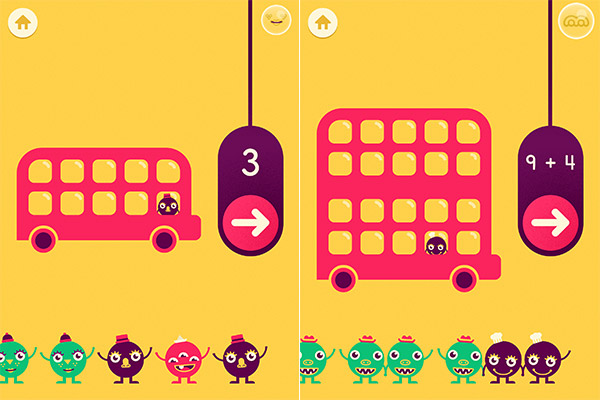
The monsters are waiting in line at the bus stop—how many go on this bus? Players match the number of monsters on the bus to the number on the traffic light by composing and decomposing numbers in a ten-frame ‘bus’. Players progress from simple counting to formal addition and subtraction problems with numbers 0–20.
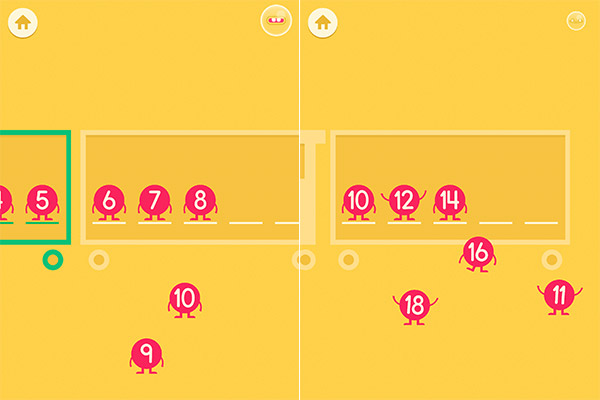
All aboard! Can you put the monsters in the right seats? Players practice the number sequence to 100 by putting numbers in the right order. Play progresses to include counting from numbers other than one, counting backwards, and counting by twos, threes, fives, and tens, both forwards and backwards.
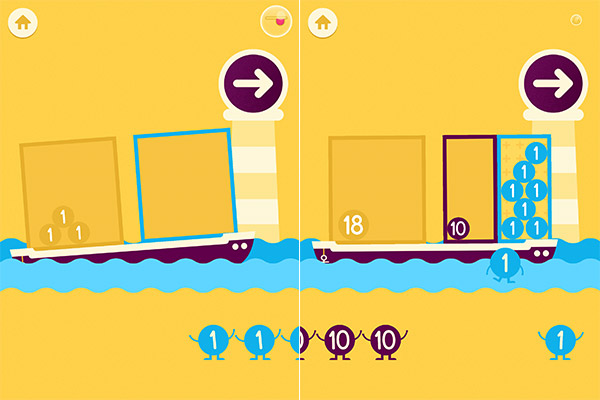
Can you balance the boat by making sure both sides have the same number? Players learn about equality and place value by matching numbers using tens and ones. Play progresses from one-to-one matching to using tens and ones to build one- and two-digit numbers.
Count to 100 by ones and by tens.
Count forward beginning from a given number within the known sequence (instead of having to begin at 1).
Write numbers from 0 to 20. Represent a number of objects with a written numeral 0–20 (with 0 representing a count of no objects).
Understand the relationship between numbers and quantities; connect counting to cardinality.
When counting objects, say the number names in the standard order, pairing each object with one and only one number name and each number name with one and only one object.
Understand that the last number name said tells the number of objects counted. The number of objects is the same regardless of their arrangement or the order in which they were counted.
Understand that each successive number name refers to a quantity that is one larger.
Count to answer “how many?” questions about as many as 20 things arranged in a line, a rectangular array, or a circle, or as many as 10 things in a scattered configuration; given a number from 1–20, count out that many objects.
Represent addition and subtraction with objects, fingers, mental images, drawings, sounds (e.g., claps), acting out situations, verbal explanations, expressions, or equations.
Solve addition and subtraction word problems, and add and subtract within 10, e.g., by using objects or drawings to represent the problem.
Fluently add and subtract within 5.
Compose and decompose numbers from 11 to 19 into ten ones and some further ones, e.g., by using objects or drawings, and record each composition or decomposition by a drawing or equation (such as 18 = 10 + 8); understand that these numbers are composed of ten ones and one, two, three, four, five, six, seven, eight, or nine ones.
Relate counting to addition and subtraction (e.g., by counting on 2 to add 2).
Add and subtract within 20, demonstrating fluency for addition and subtraction within 10.
Understand that the two digits of a two-digit number represent amounts of tens and ones. Understand the following as special cases:
10 can be thought of as a bundle of ten ones — called a “ten.”
The numbers from 11 to 19 are composed of a ten and one, two, three, four, five, six, seven, eight, or nine ones.
The numbers 10, 20, 30, 40, 50, 60, 70, 80, 90 refer to one, two, three, four, five, six, seven, eight, or nine tens (and 0 ones).